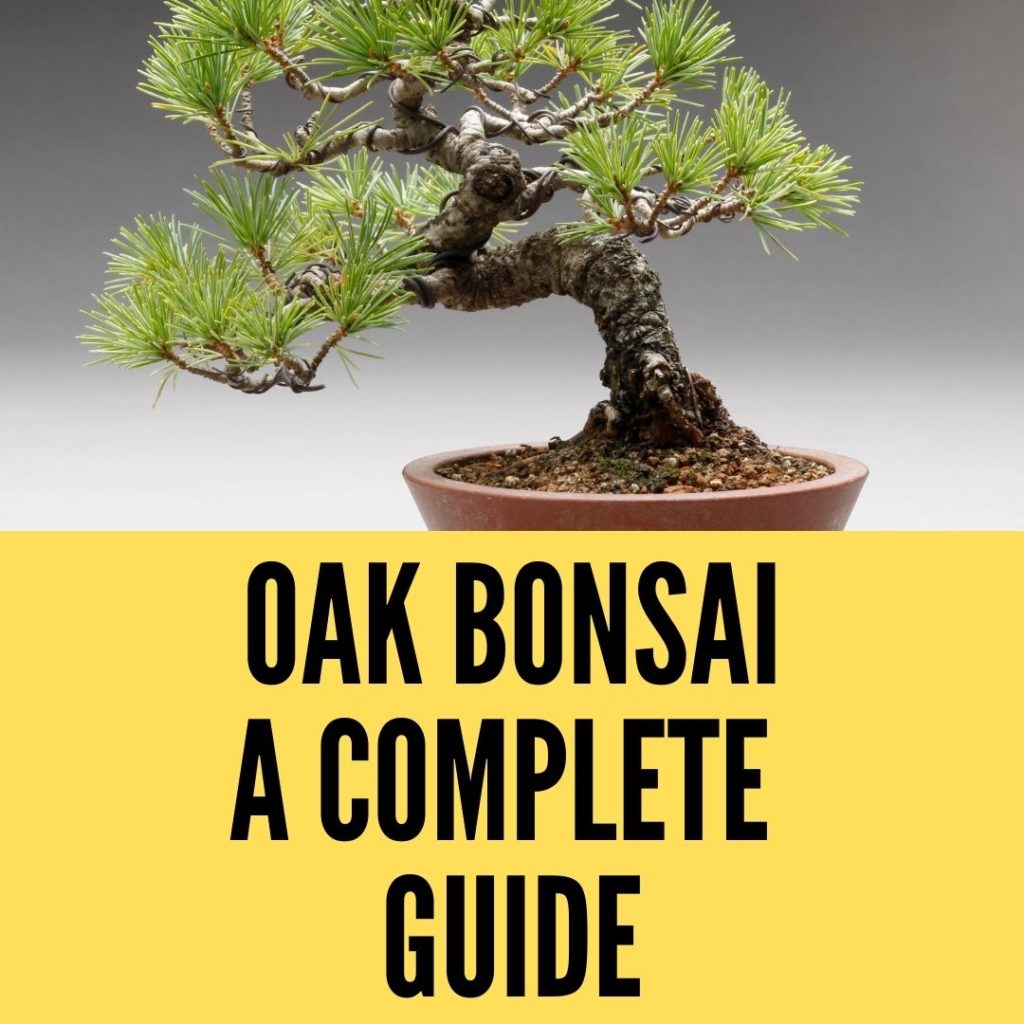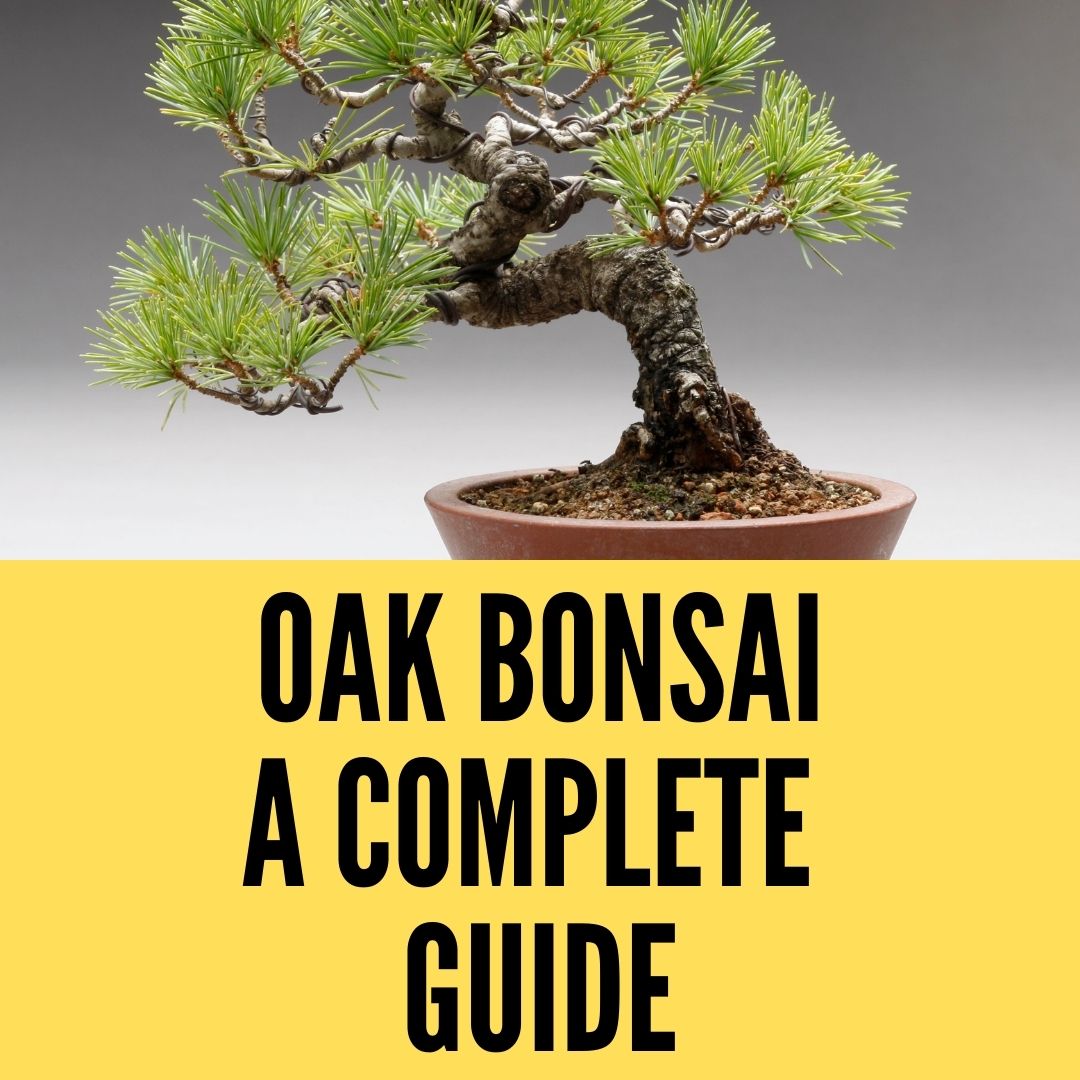Do you have little space in the garden, but don’t want to keep it like that without your oak tree? Grow them as bonsai. Then it takes up little space and, depending on its size, can even be kept in the room. Oaks are ideal as bonsai and are considered easy to care for. In the forest, they grow up to 40 meters high and several hundred years old.
Today we will tell you exactly how to grow an Oak Bonsai with step by step guide so that you would be able to start right away, even if you are a beginner.
We will show you how to bring the tree into your home or garden as a miniature. The oak follows a very slow growth which lasts between 3 and 4 years, its bonsai however gives a resplendent result in the end. You will need to be very careful about its maintenance because despite its nickname “king of the forest”, the reduced version of the oak is very susceptible to infections of all kinds. Despite this small inconvenience, this will give you great satisfaction.

What you need:
- A young oak tree
- Sunny place in the garden or on the windowsill
- Alternatively, a deep flower pot
- Bowl
THE WEATHER MANAGEMENT
First of all, it is essential to know the climate that suits your bonsai and that favors its growth. If you live in a continental region, the latter will be very comfortable in full sun during the fall and spring. It has a certain wind tolerance but still, avoids too much exposure. Then, during very hot seasons, it is best to place your small oak tree in a slightly shady place. There is no particular contraindication for winter given the original resistance of this leafy tree.
The basic preparation
For the preparation of the ground, know that an oak bonsai requires a relatively deep pot. The soil must be fairly drained, of the classic substrate type for deciduous. As for the variants of this hardwood, you have to choose between 250 species. Just be sure to choose the one that gives the smallest leaves from the start and grows relatively quickly.
However, do not expect to go below 75 cm in height for the final result. Like all bonsai, you must always proceed by starting with the roots and then gradually going up to the leaves. The reason is simple: once the tree is rooted, correcting faults at this level is difficult, if not often impossible.
Grow the oak tree from an acorn or use a small seedling that has formed from an acorn in the forest. Plant the seedling in a pot or garden soil and let it grow there for two years
Prune roots and branches
Start pruning when your bonsai oak has reached the desired size.
To do this, you have to get the tree out of the ground and cut the roots. The first step to make for a successful bonsai is to remove the taproot it is the largest that is located in the center of the trunk. The tree will then develop more lateral roots which are therefore conducive to a beautiful bonsai form.
In the same vein, you must choose the secondary roots to keep at the level of the collar of your plant. Remove those that get tangled up or that rise or fall too much on the trunk. Be careful, however, not to remove too many roots as this will destabilize your reduced oak, and in the worst case, kill it.
From the beginning, just think about giving it a harmonious shape of its nebari (the future trunk). During the second year of your bonsai, half of the lateral roots will be cut to let them develop hair roots. The draining soil also justifies its presence here since it is what will help the roots to grow better, especially with sand. During this stage, it is important to renew the fertilizer regularly because it is quickly depleted by the draining soil.

Fertilizer is also recommended during the growth period from March to October. The dosage has to be reduced significantly during the really hot seasons. Thereafter, the use of fertilizer is to be done cautiously, otherwise, your oak tree will produce gigantic leaves.
Around the fourth year, the bonsai will be unpotted then repotted, so that its collar a little more emerges on the outside. The large roots will then be more apparent,
Final aesthetic treatment
In terms of the bark, in autumn and winter, make light incisions with a cutter on the trunk. The healing and the rise of sap will give your oak a very nice aged appearance. Stay vigilant all the same, because the oaks are easily infected. The branches must be arranged as on normal trees, with a downward orientation for those of the base.
The intermediate branches will be more horizontal while those at the top will be turned towards the sky. Their length and their ramifications are also all the more provided in amount. This architecture can be obtained by ligating some of them, a procedure to be carried out around June. In case of infection, apply healing putty.
The size of the leaves is done sparingly because they are likely to become too large and your bonsai will then be unbalanced. Watering should be more abundant in summer and minimal in winter. To avoid any disease or infection, hydrate the soil directly in the pot and do not wet the tree.
How Long Does It Take To Grow A Bonsai Tree?
The best time for maintenance work
The pruning takes place in the time when the tree is in its growth phase, i.e. from May to September.
In winter, the small oak trees outdoors need winter protection, as they tolerate frost less well than their big brothers.
Of course, oak can also be pruned according to the Japanese bonsai rules. However, if you want to replicate the natural look of an oak tree, you should forego a traditional design and grow the tree based on its natural models.
Tips and tricks
Pruning a bonsai is an art in itself and requires constant care of the tree. Bonsai courses, which are offered in many cities, are helpful. You can also get help in the appropriate forums if you want to grow an oak tree into a bonsai.
If your sapling is dry, water it with sufficient water. However, avoid constant wetness.
- Prune your bonsai in the growth phase from May to September.
- Remove the lower branches and shorten the upper ones.
- Only remove the largest leaves.
When wiring your oak tree as a bonsai, use guy wire. In addition, you must remove the wires in good time. Scars in the oak wood are otherwise visible for a long time. As temporary protection, you can also run the wire through a hose before wrapping it around your tree.
Conclusion
Although oak trees are considered to be very robust, they are often attacked by powdery mildew. If this is the case with your tree, you can simply cut off the leaves affected by the fungus. If you are looking for a more effective solution, spray on an antifungal agent.
